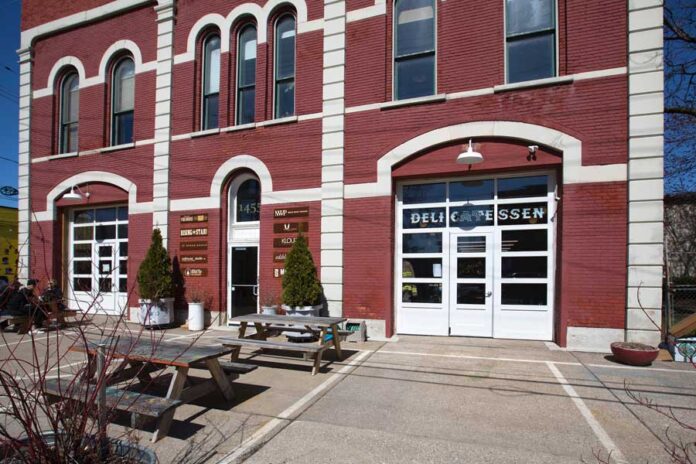by Christian Durny ’23 & Hans Engel ’23
Situated in the district of Ohio City known as Hingetown, Larder Delicatessen stands in a high traffic area only a couple minutes away from Saint Ignatius. From the outside, Larder’s repurpose of a unique, old fire station portrays the perfect assumption one would have regarding the hipster side of Ohio City. Built in 1852, Larder incorporates the architecture of its fire station to its advantage, conjuring an earthy, mature ambiance with its jars of fermenting goods displayed throughout the aged interior. The word “Larder” itself is an old term for a storage room of food, which is exactly what one discerns when entering the building.
We were pleasantly surprised by the prices at Larder. The assumption with voguish, new age restaurants like Larder is that higher quality food comes with a steep price increase that lessens the enjoyment of the meal. To our delight, we found Larder to be fair in its prices. Yes, your sandwich will cost more than a Dave’s Crispy homestyle, but considering the weeks or months that your sandwich took to make compared to an instant concoction offered by Wendy’s, I would be more than happy to offer up a few extra dollars. Another assumption of contemporary food is that it offers only meager portion sizes, a belief that Larder quashes with its more-than-generous servings.
Fermenting is the main idea behind Larder. Much like the art of smoking and barbeque discussed in the prior review of Ohio City BBQ, fermenting and dry aging is a unique art. Food is aged for weeks upon weeks. The time given to its ingredients allows for a surprising level of flavor to develop in its dishes, something one would never expect out of such a staple food like carrots or celery. The owner of Larder, Jeremy Umansky, is a master of his craft, and the extent of his fermentation knowledge is honestly a little scary to me. His book, Koji Academy, highlights his intellect on the matter, discussing his innovations in the field of fermentation. Something in every dish we sampled was aged, whether it be the coleslaw in a chicken sandwich or the corned beef in their famous Reuben.
Larder prides itself on its ever-changing menu, displaying the care of only using in season, fresh items. There are only a few items that remain constant: the chicken sandwich, the Reuben, and the pastrami sandwich. Everything else can change from day to day.
The chicken sandwich is without a doubt the fan favorite item at Larder among the people with whom we have conferred — and for good reason too. We highly recommend going to Larder and at least trying a chicken sandwich because it is a nice introduction to the unfamiliar fermented taste mixed with the familiarity of a delicacy in the chicken sandwich. While the chicken sandwich may be the star player, the supporting cast at Larder is not to be overlooked. We sampled a wide array of other menu items including Ukrainian salad, Bloody Mary pickles, potato salad, and bacon cheese fries. Larder’s side game is wide, and the tastes are unlike any I’ve had before. While many items are staples in the American diet, some, such as the fried block of mushroom we sampled, are not for the faint of heart. If you’re the kid that orders chicken tenders at every restaurant, some items at Larder may not be for you.
Overall, we thought highly of our experience at Larder. The building is inviting and a great piece of Ohio City history. The staff was hospitable, and the food was moderately expensive but justifiably so. Everything tasted delicious — a complex mix of classic flavors with a fusion of aged taste. Overall, we give Larder a 9.6 out of 10, cementing it as one of our favorite restaurants in Ohio.






